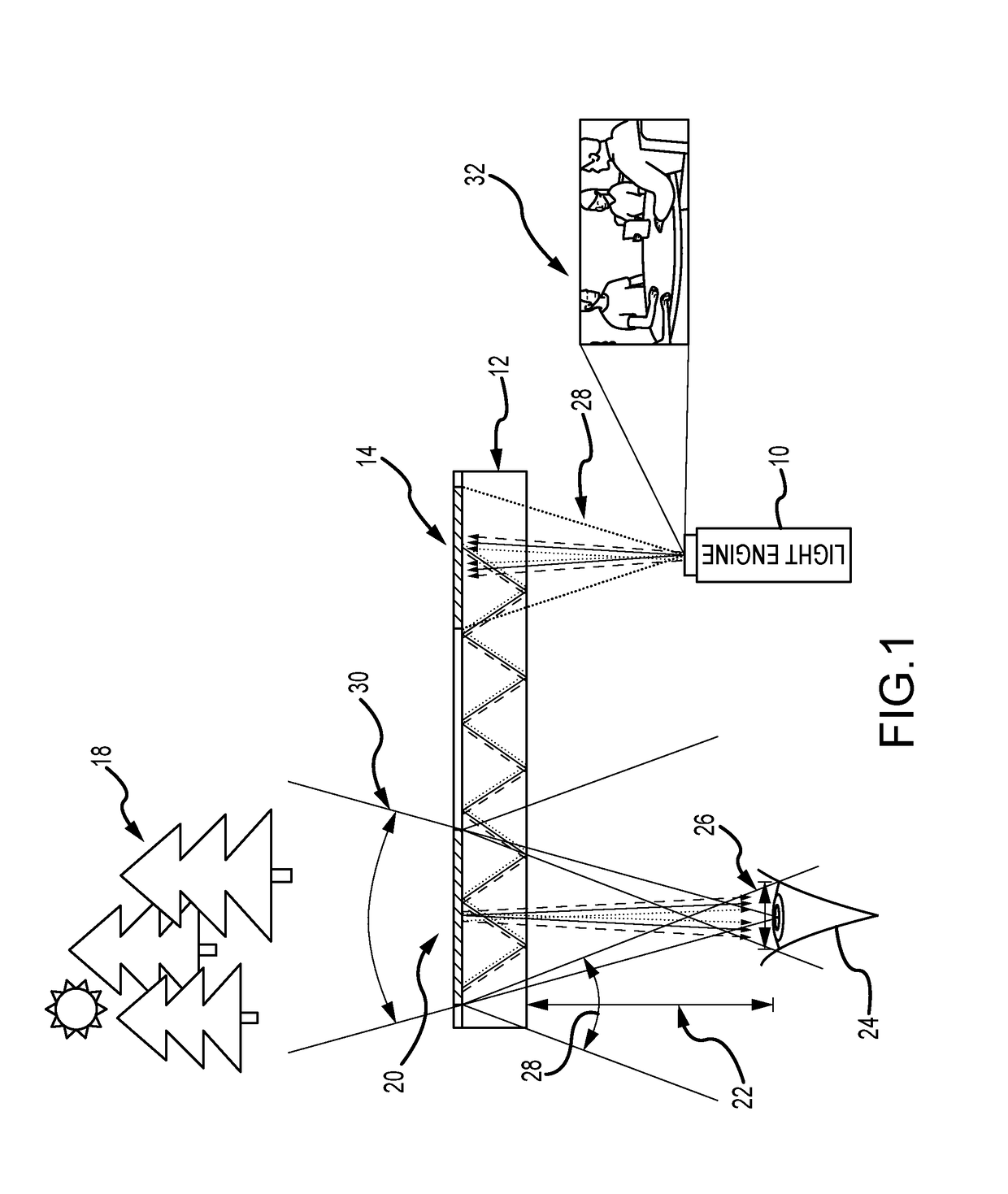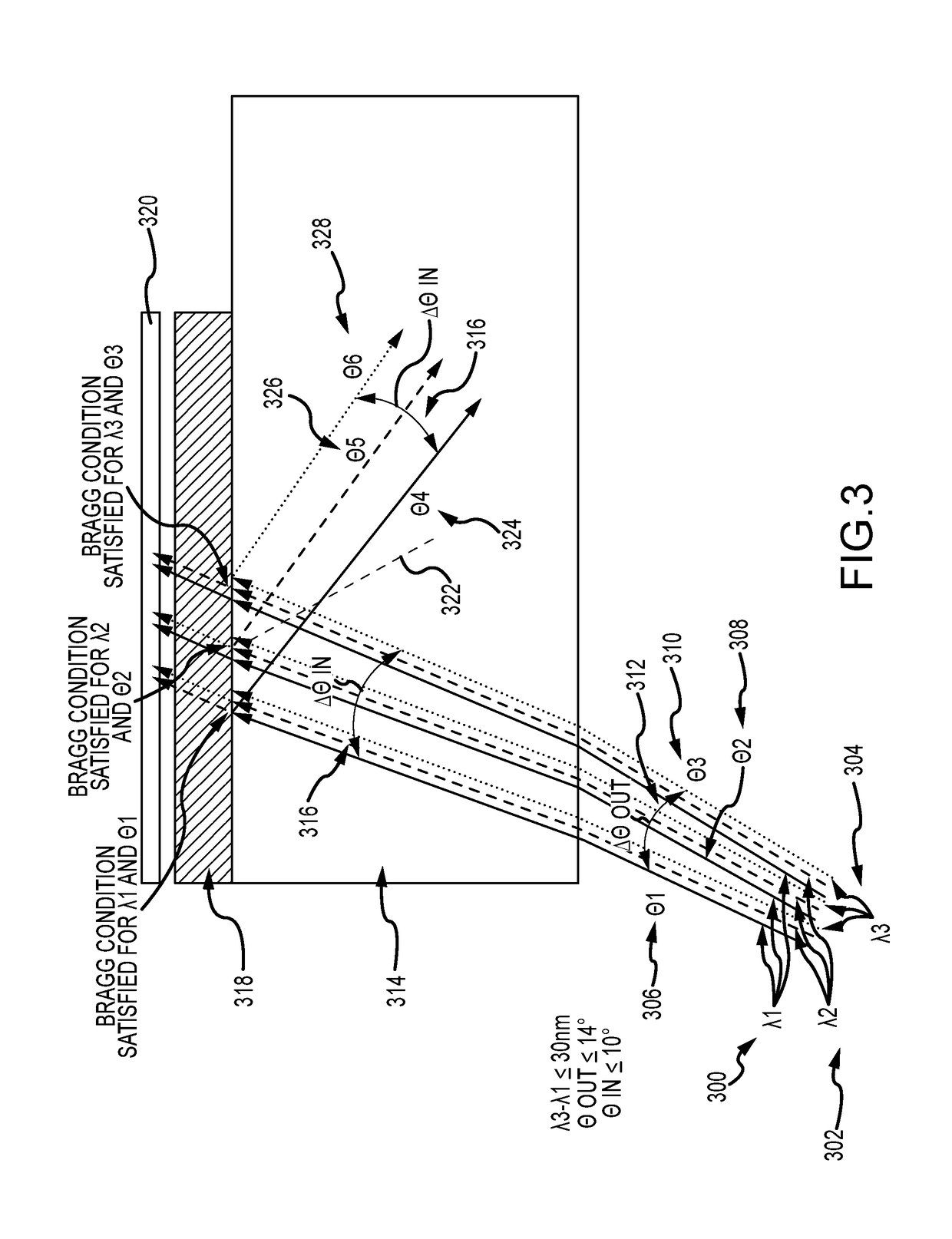Waveguide Image Combiner for Augmented Reality Displays
a technology of augmented reality and combiners, applied in the field of waveguide image combiners, can solve the problems of low diffraction efficiency outside 5 degrees, negative impact on user experience, and approach impracticality, and achieve the effect of high light efficiency of the real scene, large horizontal field of view, and high transmission of real imagery
- Summary
- Abstract
- Description
- Claims
- Application Information
AI Technical Summary
Benefits of technology
Problems solved by technology
Method used
Image
Examples
Embodiment Construction
[0048]The present invention describes a waveguide image combiner used to transmit a monochrome or full-color image in an augmented reality display. The combiner suitably provides an expanded horizontal and vertical FOV that offers a diagonal FOV≥50°, a horizontal FOV≥40 and a vertical FOV≥25°. The combiner also delivers a large horizontal eye box up to 20 mm and a vertical eye box of 10 mm while maintaining high light efficiency of the real scene (e.g. >80%). The system is able to use a light engine based on broadband (10 nm≤Δλ≤30 nm) LEDs and maintain a large horizontal field of view and high transmission of the real imagery. The approach resolves issues with current embodiments including astigmatism, image overlap, color balance, and small light engine pupils leading to reduced eye boxes.
Expanded Horizontal FOV
[0049]As was stated above, although reflection VHOEs allow image incoupling into single substrate modes up to 70° FOV, a large angular range can't be achieved with a single ...
PUM
 Login to View More
Login to View More Abstract
Description
Claims
Application Information
 Login to View More
Login to View More - R&D
- Intellectual Property
- Life Sciences
- Materials
- Tech Scout
- Unparalleled Data Quality
- Higher Quality Content
- 60% Fewer Hallucinations
Browse by: Latest US Patents, China's latest patents, Technical Efficacy Thesaurus, Application Domain, Technology Topic, Popular Technical Reports.
© 2025 PatSnap. All rights reserved.Legal|Privacy policy|Modern Slavery Act Transparency Statement|Sitemap|About US| Contact US: help@patsnap.com



